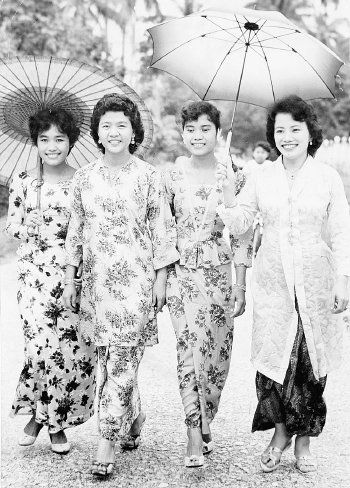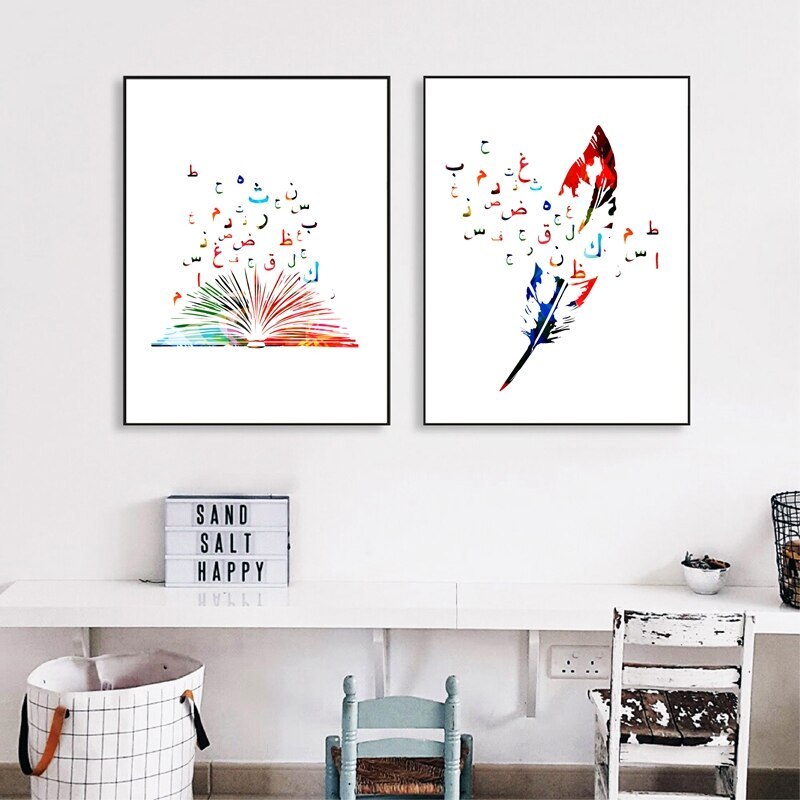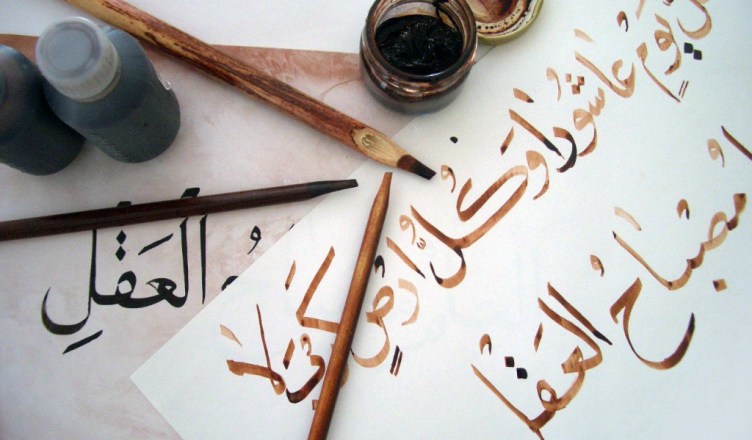Malaysia’s Education Ministry has recently made an announcement to introduce the Arabic script which is also known as Jawi in the Year 4 Malay language syllabus for primary school. The move of adding six pages of Jawi was a part of the Education Ministry’s plan to revamp the syllabus in its effort to “inculcate the values of the legacy of the Malay language and national identity”, as the language previously was written using Jawi. It’s calligraphy form, khat, was also planned to be introduced in the same syllabus. According to the Education Ministry, this change has been in the pipeline since 2014 (i.e. under the discretion of the previous government) and its implementation was intended to take place in the year 2020. While the current Education Ministry did not intend to do any examination on khat, what stoked the controversy was the fact that it was going to be made compulsory to all including vernacular schools.
What does this mean?
The introduction of Jawi and khat means that students in the vernacular schools will need to learn how to read and write them. This is on top of them learning Mandarin or Tamil, English and the Malay language. Although Jawi was historically very significant to the Malay language, the orthography is no longer used widely after the introduction of the Roman alphabet. Even now, we don’t see Jawi being used as much. With this being said, many parents are worried that this will add on to their children’s burden at school.
Another concern is that the teacher will also need to be well-versed in the calligraphy to be teaching it to the students, which might not be plausible if this were to take place early next year. If the teacher is not a Malay, then there is also a possibility of him/her not recognising the script for it is not currently taught in the Malay language at school.
Furthermore, in national schools, Jawi is exclusively used in Islamic Studies subject. The Arabic script is also used in Quranic verses, raising some concerns that the incorporation of Jawi and khat in the textbook is an act of Islamisation of non-Muslims, which by law is considered as a violation of Federal Constitution Article 12(3) – the religion of a person under the age of eighteen years shall be decided by his parent or guardian.
What happened next?
Concerned, many Chinese and Tamil associations urged for the postponement of the introduction of Jawi with some fully opposing its compulsion in the vernacular schools. After this matter was brought into the Cabinet on the 8th of August 2019, two main decisions were made. First, the Cabinet unanimously gave a green light to reduce khat lesson from six pages to three pages. Second, it was also decided that the lessons will be optional and teachers will have the freedom to choose how it should be taught in classes.
Despite this, the government still received some vehement backlash from various educationist groups demanding that this matter is further discussed with all the relevant stakeholders before it’s enforced. As a response, another Cabinet meeting was held on the 14th of August 2019. After the motion was heatedly debated in the meeting, the Cabinet ruled that Jawi introduction will be optional – only with the approval of parent-teacher associations (PTAs) together with parents and pupils of vernacular schools will it be taught.
What do we think?
Perhaps what fueled this dissatisfaction most was the fact that the biggest stakeholders (i.e. parents and the children of vernacular schools) in this case were excluded in the policy-making. Although the planning was done by the previous government, it seems that parents, teachers and students in vernacular schools had no prior information or notice that this plan had been drafted and scheduled for implementation so soon.
Members of the public felt that there was no proper dialogue session initiated by the Ministry of Education to explain or to discuss on the matter, hence triggering the uproar. There is always a fear of the unknown. That’s why it is vital for the government to explain the necessity of integrating Jawi into the syllabus. If this was articulated clearly and ultimately, earlier, then the issue may not have been blown out of proportion.
Historically, Jawi plays an essential role in the development of the Malay language, so it is an understandable move to introduce it in the Malay language syllabus. However, there is a question surrounding the need of including the teaching of khat as well. This is because khat is essentially an art. Not everyone has the aptitude for it – not even the Malays. So, why isn’t it being taught in Art classes instead? The government can even get the kids to learn other types of calligraphy too. That way, parents and children alike would not be as stressed and this issue would not be as politicised in the first place.

Similar to Jawi, Baju Kurung also conforms to Islamic requirement but it was never politicised
However, it is also unfair to blame the government in its entirety, for the lack of awareness of social history may also have fueled this controversy. Although Jawi was significantly used in Tanah Melayu after the arrival of Muslim merchants from the Arab world, the usage is not exclusive for religious purposes only.
To put things into perspective, let’s take Baju Kurung (literally translated as “enclosed shirt”) an example. Baju kurung is traditionally made loose to conform to the Islamic requirements but they are not only confined only for the Muslims. It has no religious connotation attached to it, it’s quintessential for the Malay culture and history, but everyone regardless of race and religions is more than welcomed to wear it. Its adoption does not equal to Islamisation, instead, it reflects harmony and understanding. Therefore, it is just unfortunate that many do not see this in the same view when it comes to Jawi when essentially the same concept applies.
All in all, an issue can only be solved when all parties put in the same amount of effort to understand where does the core problem lie especially when it involves sensitive matters. We believe that education is a very important aspect in building a holistic nation, therefore, it should never be politicised for anyone’s gains. Continue reading to find out more about what is Jawi and khat!
Let’s get to know
Jawi
 Jawi is a Persian-Arabic script that was used in the Malay archipelago before the invasion of the Dutch and British in the 17th century. Different from Mandarin and Tamil, the Malay language does not have its own set of alphabets. Initially, the language was written in Sanskrit-derived scripts like Pallava, then upon the arrival of Muslim traders from Arab, the Malays adopted their script into their writing system, adding a few phonemes like /c/ (چ), /ng/ ( ڠ ), /v/ (ۏ), /g/ (ڬ ), /ny/ (پ )and /p/ ( ڤ) , which are otherwise non-existent in the Arabic language itself.
Jawi is a Persian-Arabic script that was used in the Malay archipelago before the invasion of the Dutch and British in the 17th century. Different from Mandarin and Tamil, the Malay language does not have its own set of alphabets. Initially, the language was written in Sanskrit-derived scripts like Pallava, then upon the arrival of Muslim traders from Arab, the Malays adopted their script into their writing system, adding a few phonemes like /c/ (چ), /ng/ ( ڠ ), /v/ (ۏ), /g/ (ڬ ), /ny/ (پ )and /p/ ( ڤ) , which are otherwise non-existent in the Arabic language itself.
Upon its adoption, Jawi was widely used not just for religious purposes but also for trading, law, administration, and literature. Unlike Pallava which was only taught to the aristocrats and scholars, Jawi was taught to everyone regardless of class and race. Its usage, along with the spread of Islam at the time propelled the Malay language to be used as the sole lingua franca of the region during the reign of Malacca Sultanate – illustrating how important Jawi was in the evolution of the Malay language.
In fact, Jawi remained strong until the British colony came in the 19th century. In their attempt to establish roots in Tanah Melayu, the British started studying and translating Malay literary works into the Roman alphabet (aka Rumi), subsequently using it in fields of administration and education. Gradually, this orthography was adopted by the Malays and in the 60s, under the National Language Act 1963/67, Malaysia recognised Rumi as the official writing system for the Malay language.
Khat
 Khat is artistic handwriting or calligraphy that is typically based on the Arabic script. Although the history behind khat is inextricably linked with Islam, the art is not just used for religious subjects. Thanks to modernisation, khat is now also used in other artistic spheres such as construction, and fashion.
Khat is artistic handwriting or calligraphy that is typically based on the Arabic script. Although the history behind khat is inextricably linked with Islam, the art is not just used for religious subjects. Thanks to modernisation, khat is now also used in other artistic spheres such as construction, and fashion.
Essentially, there are two main types of khat writing, namely khufi and naskh. While the traditional instrument of writing khat is the qalam, a pen normally made of dried reed or bamboo, specialised khat pens can now easily be found in most stationery shops.
Have any questions on khat and jawi? Drop a comment below, and perhaps we could answer it for you!








